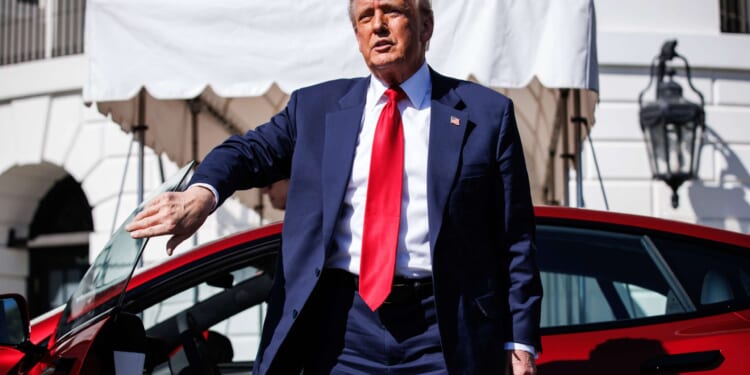Yesterday was the last day to get a tax credit for buying an electric vehicle (E.V.), and motorists were apparently buying them like crazy before the credit expired. The expiration is bad news if you were about to get rid of your gas-burning car, but it’s good news for the American taxpayer.
In 2022, then-President Joe Biden signed the Inflation Reduction Act (IRA) into law. One of its provisions, a “clean vehicle credit,” awarded up to $7,500 for purchasing an electric vehicle. A similar program had existed since 2010, but automakers were limited to 200,000 credits; the IRA removed that cap. The program was set to last until December 31, 2032, but the One Big Beautiful Bill Act, which President Donald Trump signed into law in July, changed the termination date to September 30, 2025.
In 2023, U.S. motorists received $3.3 billion in E.V. credits, and as the Brookings Institution noted, the IRA was estimated to cost as much as $780 billion in total green energy credits by 2031.
If it gets more people driving cars that put less pollution into the air, it’s worth it, right? Not exactly, as it turns out.
A 2024 working paper from the National Bureau of Economic Research found that, compared to the previous E.V. credits, the IRA’s E.V. credits generated $1.87 of benefit to the U.S. economy for every dollar spent. But when compared against having no E.V. credits, the IRA credits only generated $1.02 for every dollar spent. The study further found each credit cost U.S. taxpayers around $32,000, because around 75 percent of them went to people who would have bought an E.V. anyway.
Tax credits can also artificially inflate prices, since sellers can charge more if the government will shoulder a portion of the bill. Under the previous version of the program, when Tesla and General Motors hit the sales cap and their E.V.s were no longer eligible for the credits, each company lowered prices.
E.V.s are already more expensive than other vehicle types. Cox Automotive reported earlier this month that “the price premium over [internal combustion engine] vehicles increased to $9,066.” Automakers clearly priced their vehicles so as to qualify for credits: When Tesla introduced its Cybertruck in 2023, it priced the all-wheel-drive model starting at $79,990—just $10 shy of the tax credit’s cutoff.
Citing Morning Consult survey data, Cox reported last week that 65 percent of people curious to purchase E.V.s “still say they would consider buying an electric vehicle despite the phasing out of the Inflation Reduction Act tax rebates. Access to charging, vehicle performance, cost savings and environmental concerns all ranked higher in purchase consideration than rebates.”
In 2018, the Pacific Research Institute found that in 2014, under the previous E.V. tax credit program, nearly 80 percent of the credits went to households with an adjusted gross income of at least $100,000, with more than half reporting incomes over $200,000. J.D. Power reported last year that among surveyed buyers, “federal tax credits have played a critical role in consumer decisions to purchase an EV.” But the numbers were higher among more expensive manufacturers, with 81 percent of Volkswagen and 72 percent of Tesla buyers citing the tax credit as a factor in their decision, as opposed to just 24 percent of Kia and 21 percent of Toyota buyers.
Consumers benefit from a range of vehicle options. But those options should be determined by the market. Motorists have expressed at least some willingness to switch to electric vehicles, and the government should let them decide what to buy without giving them taxpayer money.
















